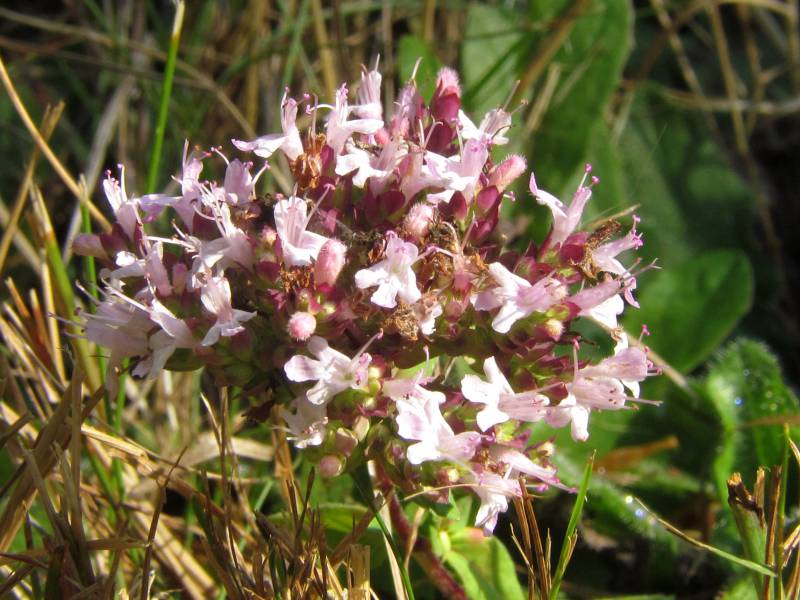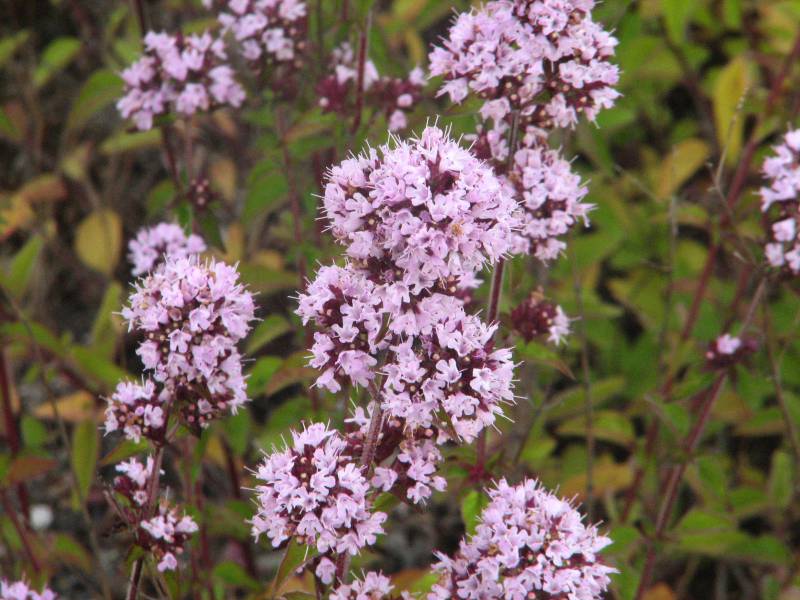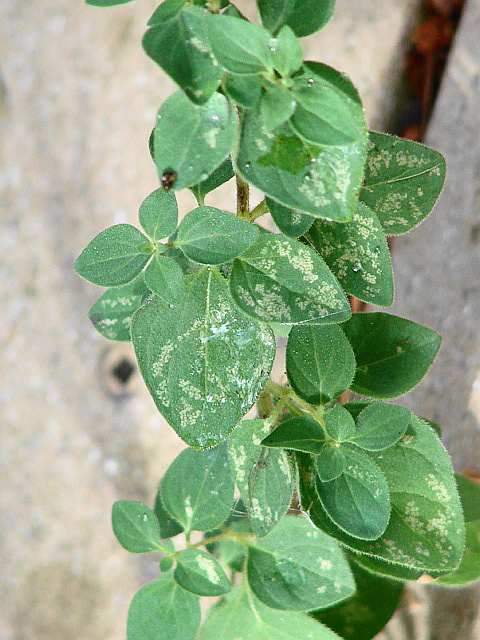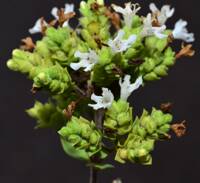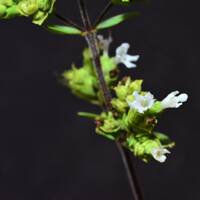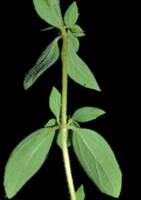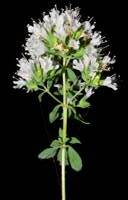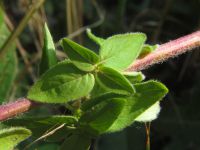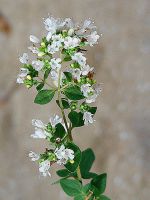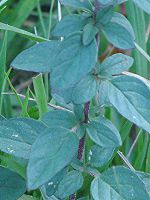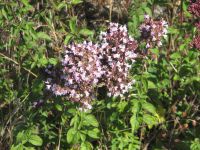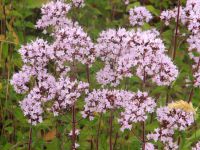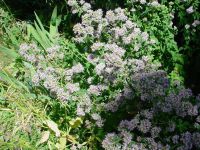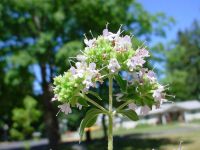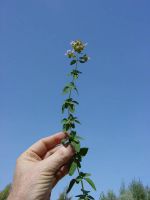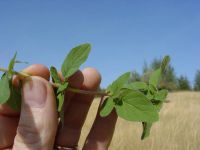Distribution: Occurring west of the Cascades crest in Washington; British Columbia to California, east to Idaho; also in eastern North America.
Habitat: Escaped from cultivation along roadsides and in disturbed soil.
Flowers: July-September
Origin: Introduced from Eurasia
Growth Duration: Perennial
Conservation Status: Not of concern
Pleasantly aromatic, perennial herbs from creeping rhizomes, the stems square, simple below the inflorescence, 3-7 dm. tall, loosely hairy.
Leaves opposite, wholly cauline, gradually reduced upward, ovate to ovate-deltoid, 1.5-3 cm. long, entire, short-petiolate; clusters of small leaves in the leaf axils.
Flowers solitary in the axils of small bracts, crowded in dense, trichotomously-branched, head-like clusters which terminate the stem and upper branches; bracts elliptic to obovate, 3-5 mm. long, purple-tipped; calyx 2-2.5 mm. long, the 5 triangular teeth purplish, shorter than to tube; corolla purple, 5 mm. long, two-lipped, the upper lip flat, shallowly notched, the lower lip spreading, 3-lobed; stamens 4, the upper pair equaling the corolla, the lower pair longer and divergent; style 2-parted; ovary 2-celled, superior.
Nutlets 4
Publication: Sp. Pl. 2: 590. 1753.
PNW Herbaria: Specimen records of Origanum vulgare in the Consortium of Pacific Northwest Herbaria database
WA Flora Checklist: Origanum vulgare checklist entry
OregonFlora: Origanum vulgare information
E-Flora BC: Origanum vulgare atlas page
CalPhotos: Origanum vulgare photos

